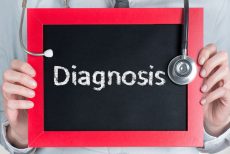 Part I provides factual context to the post below.
Part I provides factual context to the post below.
Interpreting Section 3(i)
Section 3 is the key section on “patent eligibility” and lists out what are not “inventions” under the Indian Patents Act. One such non-eligible patentable subject matter is listed in Section 3(i): “Any process for the medicinal, surgical, curative, prophylactic, diagnostic, therapeutic or other treatment of human beings or any process for a similar treatment of animals to render them free of disease or to increase their economic value or that of their products is not an invention.”
Plain meaning: Read for plain meaning, this language seems to call for evaluating whether the invention is directed to a process for diagnosis or other treatment of human beings. ‘Diagnosis’ or ‘other treatment’ is not defined. Diagnosis is generally understood to mean the identification of an illness by investigating the patient’s history, symptoms and test results. In essence, it appears that Section 3(i) aims to prevent exclusive rights to processes used to determine or identify specific diseases or medical illnesses.
However, the plain meaning is not very illuminating. For instance, it is not clear whether this section is directed only to methods involving entirely mental steps of diagnosis thereby excluding physical means for testing, detection and measurement. Further, it is unclear whether physical means that merely identify or locate naturally occurring matter (e.g. foetal DNA) can be patented. Also, it is unclear to what extent physical tests / measurements need to be linked to the ultimate diagnosis, how research tools may be different and how ‘diagnostic value’ should be defined. Lastly, can tests that are performed on biological samples or for identification of fetal abnormalities qualify as a diagnostic process ‘of human beings’.
Historical context: Historical context does not have much to offer either. The word ‘diagnostic’ was added into 3(i) through the Patent Amendment Act 2002. The JPC Report states that the reason for this addition was to align section 3 to the TRIPS Agreement i.e. to include exclusions permitted by the TRIPS. Paragraph 3 of Article 27 of the TRIPS allows members to exclude from patentability ‘diagnostic, therapeutic and surgical methods for the treatment of humans or animals.’ The report does not discuss the scope and ambit of this exclusion.
Precedent: There have been no significant cases interpreting the scope and ambit of diagnostic processes under Section 3(i). The Manual of the Patent Office Practice and Procedure prohibits patents for diagnostic methods i.e. methods used to identify medical illnesses. However, the manual permits patents to be granted to diagnostic instruments or apparatus. This implies that physical instruments that carry out a diagnostic process may be granted a patent. But the PTO’s Guidelines on Biotechnology Patents may be interpreted to bar patenting of any gene-based diagnostics.
Domestic and international practice: It appears that the PTO has granted patents to diagnostic methods in the past. For example, GE has been granted a patent no. 292269 for ‘selective radiolabeling of biomolecules’ used in diagnostic applications. GE has also been granted patents for radiation based imaging techniques related to PET scanning (no. 290670).
Outside India, the landscape appears to be fragmented. IPKat reviewed the status of diagnostic method patents in the US, Australia, Canada and Europe. While Australia, Canada and Europe have recognised patentability of diagnostic inventions, each jurisdiction applies different legal tests for ascertaining patent eligibility of diagnostic methods. Some jurisdictions apply the ‘abstract idea’ test, some require diagnostic methods to be carried out in vitro on isolated samples, some apply the natural phenomenon and economic significance test.
The US, however, appears to be an outlier and patenting diagnostic methods in the US remains challenging after the decision in Mayo. Mayo laid down a two step test to assess patent eligibility – one, is to investigate whether the claims are directed to an ineligible concept i.e. an abstract idea, law of nature or natural phenomena; if yes, the second step is to assess whether there is an inventive concept beyond the law of nature / abstract idea (other than what is well understood or routine).
Towards a bright line rule
From the above, the only thing that is clear is that there are no clear rules. A bright line rule to increase certainty for the PTO and for patentees is the need of the hour.
The court has a variety of legal tests to choose from and the court can either define Section 3(i) narrowly or broadly.
While the exact test should be determined after taking into consideration important policy questions, a very narrow view as that adopted by the PTO seems a bit extreme. The PTO’s narrow interpretation i.e. excluding any and all techniques that have diagnostic value is not in line with past practice and current international legal trends. Even the Mayo test applied in the US is not so narrow. Such a “bright line” rule has the advantage of being administratively easy to enforce but will also foreclose the possibility of patents for a large number of inventions.
In coming to the right test, the court should take into consideration important policy questions. Shamnad and Prashant’s paper on similar challenges regarding Section 3(d) delineate several pertinent policy considerations. Many of the considerations are relevant for 3(i) as well and should be considered before the test for diagnostic method patents in India is devised. Policy questions include – to what extent will the test impact research and development of diagnostics for Indian companies and for MNCs, to what extent will the test impact FDI in India, to what extent will the test impact health care delivery and patient costs.
Related Posts
- SEO Powered Content & PR Distribution. Get Amplified Today.
- Platoblockchain. Web3 Metaverse Intelligence. Knowledge Amplified. Access Here.
- Source: https://spicyip.com/2022/12/part-ii-diagnostic-method-patents-in-india.html




